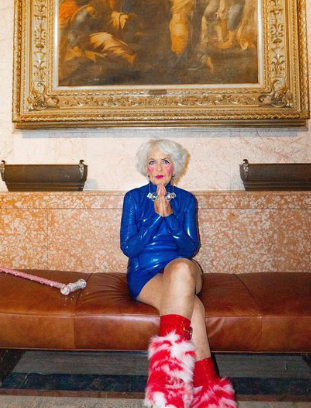The baby boomer population – born between 1946 and 1964 – is the significant demographic cohort born after the Second World War. They possess power in many sectors like business and healthcare due to their large number and economic influence, making them the primary target for advertisements. Advertising companies encourage boomers to lead an active lifestyle, care for health, look good, and make reasonable financial decisions.

Just like other groups of the population, baby boomers strive for a healthy body. They are the first generation engaged in active sports after school and conducted aerobics (Williams-Evans, 2017). However, after retiring, their distinctive feature is that they do sports not to lose weight or to look younger but to feel younger. The trend is that 99% of baby boomers travel at least once, which makes them try to make up for their lack of energy through sports (Williams-Evans, 2017). Marketers of fitness clubs who noticed that the aging population would give any money to climb the stairs without suffering and stabilize their health during the trip began offering light physical training services linked to traveling. Thus, establishing health for travel sets trends in sports even in old age.
Baby boomers do not only want to have a younger body, but also to have a modern worldview. This sizeable demographic group approaching retirement will likely exhibit a high financial risk tolerance. Therefore, baby boomers are ready to invest due to their sensation-seeking behaviors (Rabbani et al., 2021). According to the advertisement by E-Trade company (2022), they have the necessary amount of money in their bank accounts to invest in contemporary opportunities. The company created an advertisement for trading in financial assets using boomers’ cognitive traits of impulsivity and the stigma of being old. This creative commercial successfully plays on the vulnerable aspects of the aging population’s mindset.
The notion of preventive health marketing is trending for baby boomers. The fact that baby boomers are prone to more infection and chronic diseases is counterintuitive. Although they care about their health in old age, earlier people blamed boomers for drug and alcohol misuse. For example, from 1999 to 2013, the death rate among adult baby boomers from drug and alcohol poisoning that cause liver disease hit the top compared to the previous generations (Shen, 2019). It caused companies to create advertisements that spread awareness about health problems. The Penn Center of Medicine’s (2019) commercial does not consider the aging population as a passive information consumer. Instead, it calls for an urgency to get tested for hepatitis C. Its main message is that healthcare providers do not control health. Baby boomers are the ones who take responsibility for their health.

Female baby boomers are well-known for their courage, beauty, and fashion trends. No wonder, their identification with young generations regarding social networks and fashion makes them reconsider products offered in the marketplace. Baby boomers tend to find blogs on how to dress well despite their age (Lee et al., 2019). Through the pictures of Baddie Winkles, females break the stereotypes of aging appropriately and create new shopping styles (Vinwinkle, 2021). This way, some advertising campaigns and Instagram pages highlight boomers’ concern with appearance.
As baby boomers move into older adulthood, they implement different behavior models, making them more important for investigation. Their obsession with following trends, staying young, and previously neglected healthy habits make them meaningful targets for advertisements. Companies targeting baby boomers usually focus on financial activities, healthcare prevention, and fashion trends. To sum up, various companies manipulate the aging population’s minds, causing baby boomers to stay tuned.
References
E*TRADE from Morgan Stanley. (2022). E*TRADE Commercial – E*TRADE Baby “Off The Grid” [Video]. YouTube. Web.
Lee, Y., Hodges, N. J., & Min, S. (2019). “55 Is Not Old!”: Aging and Identity in Fashion Blogs Targeting Female Baby Boomers. International Textile and Apparel Association Annual Conference Proceedings 76(1). Iowa State University Digital Press.
Penn Center for Viral Hepatitis. (2019). Screening and Treating Hepatitis C at the Penn Center for Viral Hepatitis [Video].
Rabbani, A. G., Yao, Z., Wang, C., & Grable, J. E. (2021). Financial Risk Tolerance, Sensation Seeking, and Locus of Control among Pre-Retiree Baby Boomers. Journal of Financial Counseling and Planning, 32(1), 146–157.
Shen, A. (2019). Marketing Preventive Health to Baby Boomers: What if Unhealthy Lifestyles are Attributable to the Counterculture? Journal of Macromarketing, 39(2), 151–165. Web.
Vanwinkle, H. [@baddiewinkle]. (2021). Certified Blessed [Photograph]. Instagram. Web.
Williams-Evans, K. (2017). Take Advantage of Boomer Trends. IDEA Fitness Journal, 14(5), 28–31.